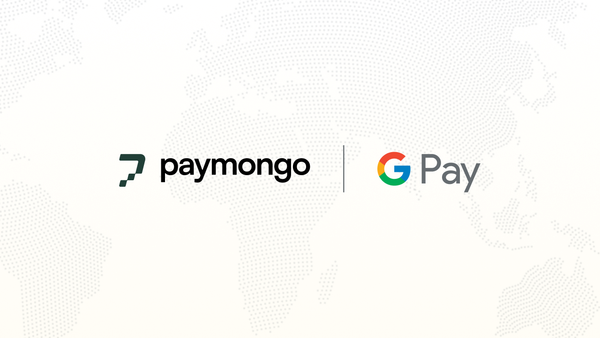Why Entrepreneurship Education Is Southeast Asia’s Most Strategic—And Most Overlooked—Ecosystem Lever
Southeast Asia's future will be scripted by young builders who learn to navigate uncertainty, build from scratch, and iterate through failure. The organizations teaching them how to do that, at scale, are the region's most undervalued backbone.

Southeast Asia’s startup narrative has calcified around downstream drama: funding winters, unicorn valuations, regulatory chess matches. These debates are periodic and performative—the lifeblood of conference panels and investment memos, recycled every cycle, always framing the region as fragile or promising in terms external to its real bottleneck.
But the uncomfortable truth? Funding, market size, and regulation are symptoms, not root causes. The true constraint is talent architecture. Southeast Asia’s digital economy may be projected to hit $1 trillion by 2030, but only if it solves for the earliest—and most ignored—variable: the consistent production of founder-quality, ecosystem-ready talent.
This isn’t a capital problem: The Philippines, for instance, raised $1.12 billion in 2024, its second-highest ever, even as its Global Startup Ecosystem Index ranking declined for the fourth consecutive year—a drop driven by talent pipeline fragility, not capital supply. Nor is it simply regulatory: Policy friction matters, but only after enough capable founders exist to navigate it.
The Upstream Blind Spot
Investor playbooks and government white papers enumerate three gaps: access to capital, access to markets, access to talent. All are presented as equals. But talent access is categorically upstream, the ecosystem’s true leverage point, systematically deprioritized and misdiagnosed.
Less than 1% of Southeast Asia’s population possesses advanced digital ICT skills; Indonesia needs 9 million digital professionals by 2030, Singapore a million more by next year. Yet, upstream of financial and regulatory bottlenecks lies a subtler filter: how many future founders are lost before they ever become fundable—never developing entrepreneurial frameworks, networks, or fluency at all?
Most national education systems still deploy a “factory model”—age-segregated, exam-focused, designed for causal reasoning when the market now demands effectual reasoning. As Reactor School’s Rusydi Khairul observes, “Students graduate thinking there’s a single right answer. The real world demands a type of thinking where uncertainty is the only rule.”
Grassroots Builders Are the True Ecosystem Architects
Here's the structural paradox: Governments act through policy cycles measured in years. Ministries merge, commissions convene, reforms pilot—always promising future change. Meanwhile, the regional market rewrites rules every 18 months. AI disruption. Remote work. Cross-border capital flows. Education reform simply cannot outpace market reinvention.
The result? The ecosystem’s real movers are not regulatory agencies but grassroots builders—the high-leverage education operators working outside bureaucratic cycles. Consider Reactor School: since 2012, it has equipped 20,000+ students across 18 countries, embedding entrepreneurial reasoning in academic syllabi, and training teachers, not bypassing them.
It’s not just isolated innovation: Alumni like Daryl Lim, now leading Augmentus (a no-code robotics platform adopted by Hyundai and Fujitsu), prove the multiplier effect. And still, EdTech funding plummeted 89% globally since 2021, Southeast Asia’s seed-stage EdTech dropped 50% in 2025 alone. The sector most vital to long-term ecosystem health is structurally underfunded and misunderstood.
The Attention Is Misallocated
Entrepreneurship education sits at the juncture of policy impatience and investment myopia. It rarely maps cleanly to ministry KPIs or VC timelines. Ministries optimize for literacy rates and test scores; venture funds seek capital-light, fast-scalable plays. But without entrepreneurship fluency, later-stage investment, and regulatory reform, lose their multiplier. The ERIA White Paper is clear: “Circulating highly skilled individuals—via talent visas, entrepreneurship education, university strengthening—is essential for knowledge-driven economies.” Yet, 61% of youth in Southeast Asia aged 10–24 miss out on formal digital skills instruction entirely.
What Needs to Shift: Policy, Capital, Coalitions
Southeast Asia's brightest spot isn't late-stage capital deployment or policy reform. It's in the grassroots builders quietly rewiring how young people think. To unlock this potential, three shifts are necessary:
- Policy: Treat entrepreneurship education as infrastructure, not enrichment. Embed EntreEd frameworks in national curricula; create educator fast-tracks; fund public-private partnerships so grassroots programs can scale at market pace.
- Capital: Redefine EdTech investment as ecosystem infrastructure. Patient capital, new evaluation frameworks, and validation for long-gestation startups must replace one-size SaaS metrics.
- Coalitions: Tech giants and conglomerates—Grab, Gojek, Tokopedia—who reshaped markets, now must invest in talent pipelines, co-designing programs with operators so ecosystem needs shape classroom realities.
Southeast Asia's startup ecosystem is not constrained by a lack of capital, market size, or even regulatory clarity—though all three matter. It's constrained by the upstream systems that produce founder-quality talent. EdTech, specifically entrepreneurship education, isn't a feel-good auxiliary sector. It's the earliest, highest-leverage intervention available. And right now, it's being outpaced by bureaucracy, misaligned incentives, and a factory-model education system that hasn't adapted to what the next decade actually demands.
The future will not be scripted by slow reform. It will be scripted by the mindset of the region's young builders—those who learn to navigate uncertainty, build from scratch, and iterate through failure. The organizations teaching them how to do that, at scale, are Southeast Asia's most undervalued backbone. Recognizing this isn't just strategic; it's existential. Because while we debate unicorn valuations and funding winters, the real bottleneck sits in classrooms across 18 countries, waiting for the attention it deserves.
References
- Google, Temasek, Bain & Company. “e-Conomy SEA 2023 Report.” https://economysea.withgoogle.com/
- StartupBlink. “Global Startup Ecosystem Index 2024.” https://www.startupblink.com/startups/philippines
- World Bank. “Indonesia Digital Talent Development Report.” https://www.worldbank.org/en/country/indonesia/publication/indonesia-digital-talent-development-report
Infocomm Media Development Authority Singapore. https://www.imda.gov.sg/ - Reactor School. “Impact Report.” https://www.reactor.school/impact/
- HolonIQ. “Global EdTech Funding Reports.” https://www.holoniq.com/edtech/funding





